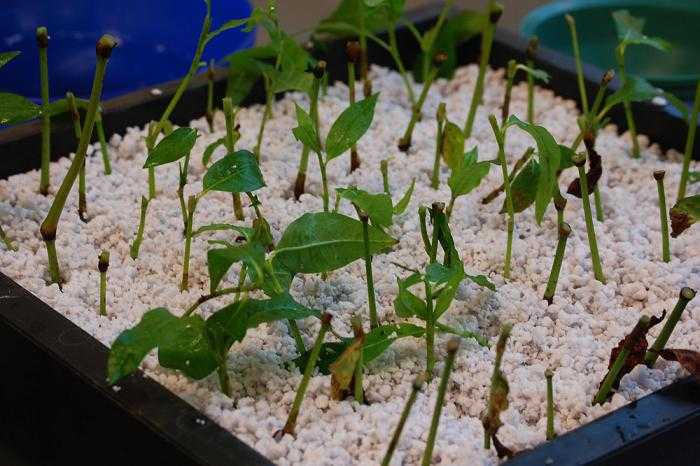Perlite is a volcanic glass with a high water content. Perlite is crushed and classified, and then heated to 1000 ° C. Under the pressure of water vapor, perlite swells, increasing its initial volume from 4 to 20 times. The result is a gray-white, extremely porous, granular material. Particles in mixtures come in various sizes. The most suitable size for hydroponics is 1,5-3 mm.
It is a lightweight material (with a density of about 0,1 g / cm3), which is able to hold four times more water than its own weight, mainly in the internal pores: therefore, it has good water-holding properties.
Perlite is very inert and neutral in pH (7-7,5) and does not take nutrients from the solution.
Perlite is rarely used in its pure form, except for bag cultivation (in large bags suspended from the top frame of the greenhouse). The problem is that when used on a tray, perlite floats during the irrigation cycle. Indoors, as a substrate, it is useless, but it can be very useful for reproduction. Small pellets of perlite are easily washed out of young roots without damaging them. Perlite is often mixed with vermiculite in a ratio of 2/3 perlite to 1/3 vermiculite. Perlite is also found in countless potting and soilless mixtures.

Reapplication
As in the case of mineral wool, if there are no pathogens, then it is enough to rinse the perlite, add a dose of enzymes and you can reuse it. After several harvests, perlite loses its structure and should no longer be used. In addition, algae adore perlite and form a green layer on it. Therefore, when using it neat for propagation, it is best to cover the tray with plastic wrap.
For a more detailed study of the topic, we recommend visiting the corresponding section of the forum: “Perlite”.
Literature
- William Texier. Hydroponics for everyone. All about home gardening. – M .: HydroScope, 2013 .– 296 p. – ISBN 978-2-84594-089-5.